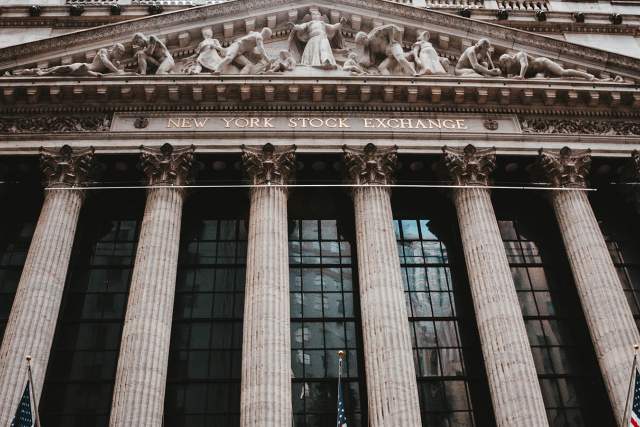At the start of 2020, international trade was already under a protectionist cloud. Rising trade tensions between the US and the rest of the world, particularly China, had been in the economic headlines for three years, with US imports from China shrinking by a dramatic 17.7 percent between 2018-2019. Despite the Phase 1 deal signed between the two countries on January 15 2020, few observers saw this as the last bump in the road in this tariff war.
The coronavirus COVID-19 pandemic has landed an unexpected and unwelcome follow-up blow to the gut, and world trade has now been left reeling like a boxer from a swift one-two punch.
COVID-19 is first and foremost a public health crisis. Our thoughts and prayers should rightly be with those who have been sickened, and with medical workers and first-responders around the world. Mulling the impact of the pandemic on international trade may seem like we are getting ahead of ourselves. But make no mistake, the imprint of COVID-19 on global trade flows is already being felt.

Chor’s current research topics include international trade, the political economy, growth, and development, and economic history.
According to data just released by the US Census Bureau, U.S. imports from the rest of the world stood at U.S. $178.3 billion (in non-seasonally adjusted terms) in February 2020, a 9.7 percent decrease relative to the U.S. $196.4 billion recorded in the previous month. This was driven by a stunning contraction in U.S. imports from China, from U.S. $33.3 billion in January 2020 to U.S. $22.8 billion in February 2020.
Much of this decline reflects of course the severe shock to supply chains, as the pandemic peaked in mainland China in February 2020. As China sought to aggressively shut down the spread of the coronavirus, factory shifts were shortened or even completely shuttered. However, the concern for global trade now extends beyond the impact of COVID-19 on the supply side. Global demand has sagged as the EU and the U.S. have slipped into an economic slowdown and unemployment has risen, the inevitable consequence of the drastic stay-at-home measures necessary to “flatten the curve” of infections. Moreover, measures taken to avert the spread of the coronavirus—such as the trimming of staff numbers to maintain a safe distance between co-workers—can be expected to slow down international shipments of goods through port facilities and distribution centers.
There is a real and pressing concern that the COVID-19 pandemic will accentuate the return of protectionism. In the extreme, it may even undo the progress made towards cross-country economic integration over the past decades.
Just as the pandemic has medically afflicted some segments of the population more than others, its effect is likely to be uneven too across different tradable goods industries. Flows of medical equipment and supplies have been buoyed, as has the demand for home electronic products (by families now confined indoors). On the other hand, purchases of big-ticket consumer durables such as cars has already stalled.
It is tempting to try to paint an optimistic scenario of where world trade may be headed: Once the worst of the pandemic has passed, perhaps trade flows will bounce back as supply chain managers simply press the re-start button to meet a swift recovery in global demand. But that would be far too sanguine a scenario in my view. There are clear signs amidst the ongoing crisis response that this episode will have long-lasting repercussions for patterns of global trade and production, as well as the conduct of trade policy.
Three observations that should be of concern both to academic researchers and policy practitioners:
-
There has been a frantic scramble by governments—and even by individual hospitals—to secure supplies of essential medical items, such as personal protective equipment (PPE), face masks, ventilators, chemical reagents for test-kits, and so on. This has already prompted calls for restrictions to be placed on trade flows of such goods. Witness for example the pressure applied by the Trump administration on 3M to restrict its exports of N95 masks to Canada and Latin America, notwithstanding Canada’s position as one of the US’ closest trading partners. Such calls are likely to get more frequent and voluminous, especially if the pandemic were to drag on, with subsequent waves of infection prompting repeated surges in demand for these essential goods.
One can argue that it is only natural for a country’s government to try to secure such supplies for its own citizens. But the resort to unilateral trade policies to achieve this end is a slippery slope. What is to restrain a creeping expansion of the list of items deemed to be vital for national security? If N95 masks are fair game, why not restrict trade in test-kits, drugs, or perhaps even an eventual vaccine on similar grounds? The concern here is that the world trade landscape will become increasingly protectionist and siloed. This is even though the opposite course of action—the removal of trade barriers and the expansion of cooperation—would instead help to boost economies of scale in the global production of these essential items. Such trade restrictions moreover raise a whole host of ethical issues related to developing countries’ access to life-saving resources, even as they face the brunt of the global pandemic.
- This pandemic will force firms and countries to reassess their exposure to global supply chain disruptions. I would be surprised if such discussions have not already been triggered in earnest in most multinational corporations. Prior to COVID-19, few would have foreseen a catastrophic event that would simultaneously shut down factories in China, while closing virtually all major border crossings to short-term business travel. Yet this is exactly the state of affairs that has materialized over the past two months. Firms in the service sector have been better able to adapt, by making a transition to remote operations and telecommuting. But firms in the manufacturing sector—that depend on physical flows of parts and components for their production operations—do not have this luxury. Already, there is talk that this pandemic could lead manufacturing firms to back away from offshoring, to instead bring home production of key inputs, in order to avoid disruptions from possible border closures. At the very least, I would expect that firms will actively seek to diversify the sources of their inputs, to reduce their dependence on supplies from any single country. This could even prompt companies to adopt technologies such as 3D printing, which could make it more feasible for production to be concentrated in fewer locations. The cross-border fragmentation of manufacturing activity that we have seen for several decades seems due for a pause as companies now rethink their sourcing strategies.
One should expect too that governments will get in on this act, to champion the need to retain more production within their borders. Country governments in Europe and the US have found themselves exposed during this pandemic by their lack of domestic manufacturing capacity for critical medical equipment such as ventilators. With unemployment on the rise, particularly in the US, it would not come as a surprise if calls for more tariffs were to intensify in the second half of 2020, on the grounds that this will help to shore up domestic manufacturing capabilities and retain jobs in that sector. That this timing will coincide with the height of campaigning for the 2020 US presidential election only raises the likelihood that tariffs will be in the spotlight once again. Ever since the Smoot-Hawley tariffs during the Great Depression, there has been a tendency for countries to turn to protectionism as a “solution” in the aftermath of major economic downturns. This downturn brought about by COVID-19 is shaping up to be no different.
-
The coronavirus pandemic could further complicate cross-country economic relations that were already under strain entering 2020. Take the prominent case of US-China trade ties. At one level, there is a recognition that both the US and China have an interest in maintaining a working trade relationship that results in a win-win bargain: Now that China appears to have gotten over the worst of COVID-19, China has become a key exporter of emergency medical supplies to the US (and the EU). However, this bilateral relationship remains fraught with uncertainty, as China remains an easy boogey-man to criticize and pin blame on for the coronavirus outbreak. This has heightened the risk of missteps in how US-China trade ties evolve moving forward. Let us not forget too that the pandemic has shaken other economic relationships that were once thought to be rock solid. The US-Canada land border has been shut for several weeks now. Likewise, EU countries have shut their borders—an unimaginable scenario just months ago—to stem the spread of the virus, calling into question the notion of European solidarity.
In short, there is a real and pressing concern that the COVID-19 pandemic will accentuate the return of protectionism. In the extreme, it may even undo the progress made towards cross-country economic integration over the past decades. How businesses and countries choose to respond will have far-reaching implications for the direction in which the conduct of world trade and global production are headed.
This working paper is part of the ABFER 2020 Pandemic Commentary.
Davin Chor is an associate professor in Tuck’s Economics group and a chair in Dartmouth’s academic cluster on globalization, which studies the far-reaching repercussions of globalization on world markets, governments, trade, and society. At Tuck, he teaches the Global Economics for Managers course. Professor Chor’s current research focuses on international trade and political economy.

